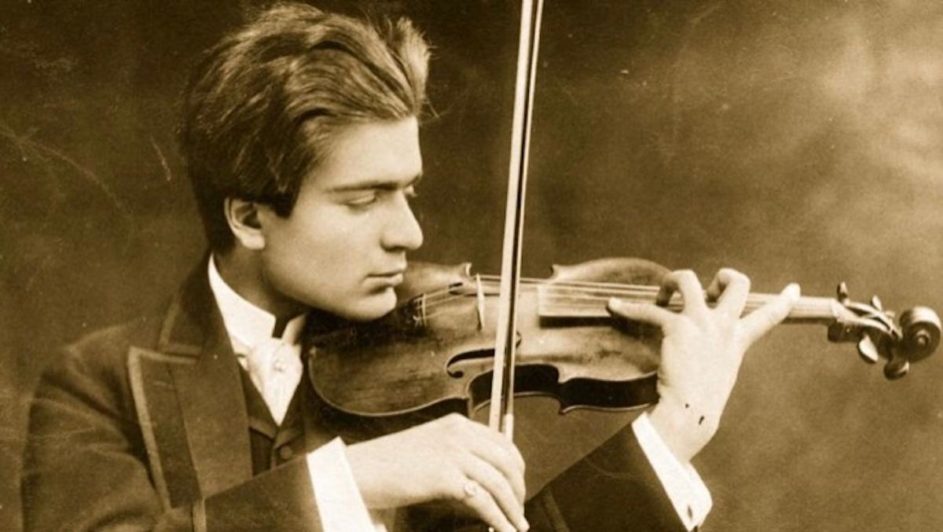As an attorney-turned-journalist, Peter Aronson covered such high-profile cases as O.J. Simpson, Rodney King and Bush v. Gore. So when he discovered the story of Polish Jewish violinist Bronislaw Huberman, who personally saved nearly 1,000 Jews, including 70 musicians and their families, from the Holocaust, he knew there was a book in there.
He launched his career as a children’s book author with 2018’s “Bronislaw Huberman: From child prodigy to hero, the violinist who saved Jewish musicians from the Holocaust.”

Aronson’s book
Aronson will speak about Huberman at 3:30 p.m. Thursday, Jan. 24, in the Lindsay Young Auditorium at the John C. Hodges Library, 1015 Volunteer Blvd., on the University of Tennessee campus. The free lecture is sponsored by the UT Ewing Gallery, in conjunction with the “Violins of Hope: Strings of the Holocaust” exhibition, which runs through Sunday, Jan. 27, at the UT Downtown Gallery, 106 S. Gay St.
In addition to Huberman’s critical humanitarian work of saving people’s lives, his lasting legacy is the 1936 founding of the Palestine Symphony Orchestra, where the musicians he saved from the Nazis could earn a living. At the time, many of the musicians were being dismissed from European orchestras because they were Jews.
The Palestine Symphony Orchestra’s inaugural concert was on Dec. 26, 1936, in Tel Aviv, Palestine. Huberman persuaded famed Italian conductor Arturo Toscanini to conduct its first performance. In 1948, after the state of Israel was formed, the group was renamed the Israel Philharmonic Orchestra.
Huberman was a violin prodigy. Born in 1882 in Czestochowa, Poland, Bronislaw by age 9 was supporting his family – his parents and two brothers – by performing concerts in Austria and Germany.
At 13, he played sold-out concerts in Vienna. One of them made him world famous and confirmed his growing reputation as a great virtuoso violinist. With composers Johannes Brahms, Gustav Mahler, Anton Bruckner and Johann Strauss in attendance, Huberman played Brahms’ “Violin Concerto in D Major,” Op. 77, when many of the top violinists of the time complained that it was so difficult it was essentially unplayable.
Huberman was studying with Joseph Joachim, perhaps the greatest 19th-century violinist, to whom Brahms had dedicated his concerto. Huberman proved the complainers wrong, to Brahms’ eternal gratitude. The performance was a triumph for Joachim, Brahms and Huberman.
As a reward for his growing stature as a violinist, Huberman was given a Stradivarius violin by the family of Polish Count Wladyslaw Zamoyski. The violin has since become one of the most famous violins in the world due to its history of being stolen twice. It is known as the Gibson ex-Huberman Stradivarius of 1713.
It is currently owned by American violinist Joshua Bell, who bought it in 2001 for $4 million from a shop in London where it had been taken for repairs after being recovered from the latest theft.
Aronson’s book is the first in the Groundbreaker Series, short biographies about extraordinary people doing exceptional things. Its target audience is middle-grade students.
Aronson’s talk is part of a series of events happening in town this week related to the “Violins of Hope: Strings of the Holocaust” project, sponsored by the Stanford Eisenberg Knoxville Jewish Day School.
In addition to the free exhibition at the UT Downtown Gallery and several presentations at area schools, there will be a concert at the Tennessee Theatre at 7 p.m. Wednesday and Thursday with the Knoxville Symphony playing the restored violins that belonged to Holocaust musicians and their families. Tickets for the concerts may be purchased here.
Parking on the UT campus can be a struggle; for help with parking passes for the lecture, call Ewing Gallery at 865-384-3280.

